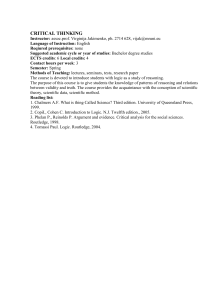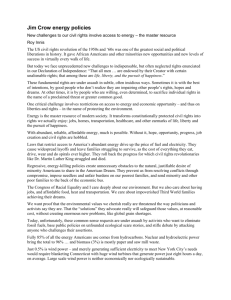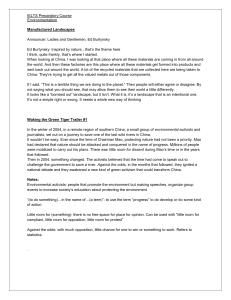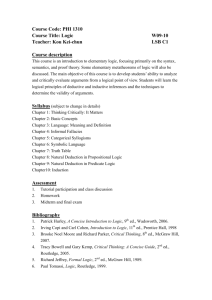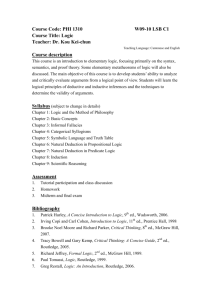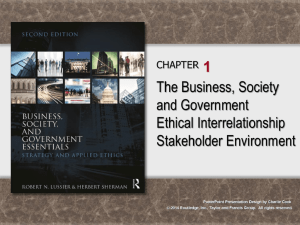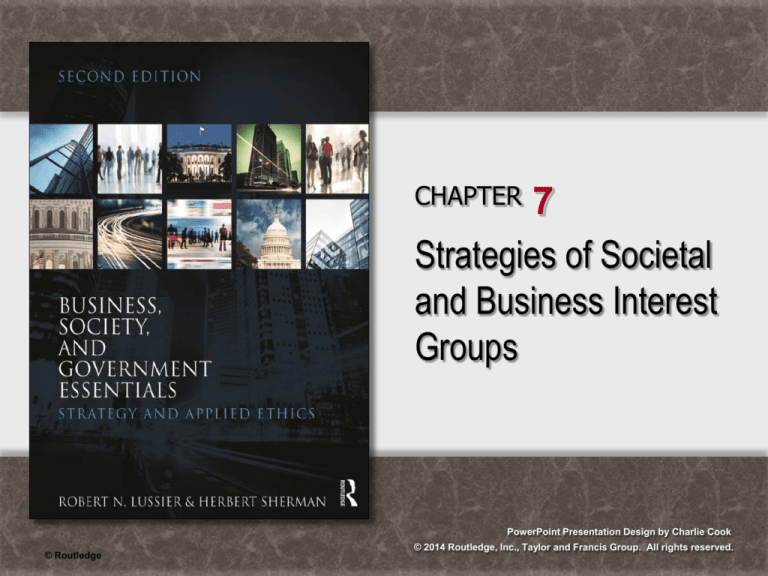
CHAPTER
7
Strategies of Societal
and Business Interest
Groups
PowerPoint Presentation Design by Charlie Cook
© Routledge
© 2014 Routledge, Inc., Taylor and Francis Group. All rights reserved.
Learning Outcomes
After studying this chapter, you should be able to:
1. Describe the objectives and roles of societal activists
2. Compare and contrast societal interest groups’ and business interest
groups’ operations and financing
3. Explain the difference between peak and trade groups and their
advantages and disadvantages
4. Describe the objectives and roles of business interest groups
5. List and briefly explain seven strategies activists use against business
6. List and briefly explain eight nonmarket strategies business interest
groups use against activists
7. Compare and contrast strategies used by activists and businesses
against each other
8. Define the key terms in the chapter
© Routledge
Societal Interest Group Activists
• Society
Interest groups and the communities affected
by business
• Societal interest group activists
Advocates of nonprofit or nongovernmental
organizations (NGOs) that aggressively
pursue social issues with business and
government to promote their interests
• Activists
Societal interest groups, their members,
and anyone interested in their causes
© Routledge
The Objectives and Roles of Activists
Provide information
about business
activities
Set voluntary standards
and influence laws and
regulations
Develop nonmarket
agenda issues for
business
Roles of
Activists
Pressure business and
government to change activities,
policies, and procedures
© Routledge
Figure 7.1
Societal Interest Groups and Their Functions
Public Citizen
a consumer advocate to the government
Consumer Federation
of America (CFA)
a consumer advocate, source of information
and education, and service activist group
Common Cause
a public advocate for the public interest in the
political process, holding elected leaders
accountable
Center for Public
Integrity
a nonadvocacy institute that provides
investigative journalism on issues of public
concern
© Routledge
Business Interest Groups
• Business interest groups
Nonprofit organizations comprised of groups of firms
joined together to advocate their interest on issues.
• Peak associations
Represent businesses from several industries on a
broad range of general business interest issues.
• Trade groups
Represent businesses on a narrower range of
industry- or business-specific interest issues.
© Routledge
The Objectives and Roles of
Business Interest Groups
Set voluntary standards
and influence laws and
regulations
Advocate the business
side of the issue
Provide
information
Roles of Business
Interest Groups
Advocate to society and
government and to provide
services to their members
© Routledge
Provide
member
services
Figure 7.2
Peak Business Interest Groups and Their Functions
Better Business
Bureau (BBB)
a neutral third-party interest group that helps
consumers and businesses maintain an
ethical marketplace
U.S. Chamber of
Commerce
the largest business advocate to government
and society
Business Roundtable
an association of chief executive officers of
leading U.S. corporations that serves as a
business advocate to government
National Federation of a small and independent business advocate to
Independent Business government that serves as a key resource to
(NFIB)
its members
© Routledge
Figure 7.3
Activist Strategies Against Business
Grassroots Efforts
Demonstrations: Picketing and Rallies
Boycotts
News Media Relations and Advocacy Advertising
Building Coalitions
Appeal to Government
Litigation
© Routledge
Activist Grassroots Efforts
Preprinted letters
and postcards
Visits
Calls
Letters
© Routledge
Grass Roots
Efforts to
Mobilize
Support
Grass-tops
Internet, e-mails,
and cyber activity
Business Strategies Against Activists
• 5 Is Strategic Analysis
1. Identification of the issue and its life cycle stage
2. Identification of interested strategic stakeholders
3. Incentive of stakeholders determination
4. Information—communication objectives and strategies
5. Interaction (nonmarket) strategy selection
© Routledge
Figure 7.4
Nonmarket Strategies Businesses Use Against Activists
Gaining Community Public Sentiment for Being
Socially Responsible
Grand Nonmarket Strategies
Lockouts
Grassroots Efforts
News Media Relations and Advocacy Advertising
Building Coalitions
Appeal to Government
Litigation
© Routledge
Grand Nonmarket Strategies for Dealing
with an Activist Issue
Types of
Nonmarket
Strategies
Donate to
activists
© Routledge
Ignore
activists
Oppose
activists
Negotiate
with activists
Work with
activists
Business Nonmarket and
Market Strategies and Ethics
Information Strategies
• Use facts and figures
• Clearly state assumptions
• Gain public sentiment with a
good corporate reputation
• Use outside sources, experts,
and stakeholders to support
the accuracy and legitimacy
of the firm’s side of an issue
© Routledge
Societal Strategies
• Be socially responsible
• Voluntarily self-regulate
• Maintain ethical relations with
all stakeholders
• Implement the eight nonmarket
strategies against activists
• Employ an opposing grand
strategy
Key Terms
activists
grand nonmarket strategies
Better Business Bureau (BBB)
grassroots efforts
boycotts
lockouts
business interest groups
business roundtable
National Federation of
Independent Business (NFIB)
center for public integrity
peak interest groups
coalitions
public citizen
common cause
societal interest group activists
Consumer Federation of America
(CFA)
trade groups
© Routledge
U.S. Chamber of Commerce


